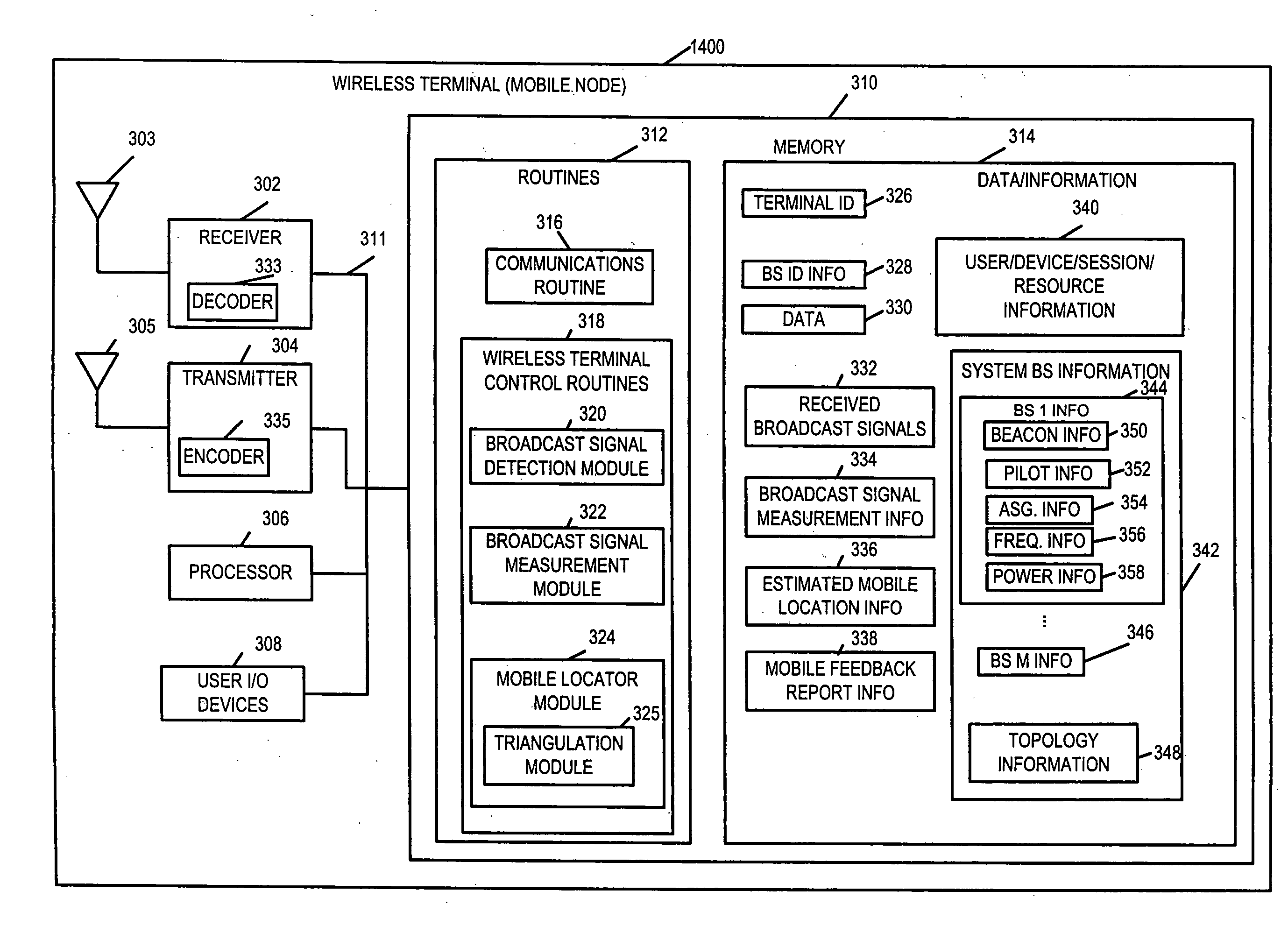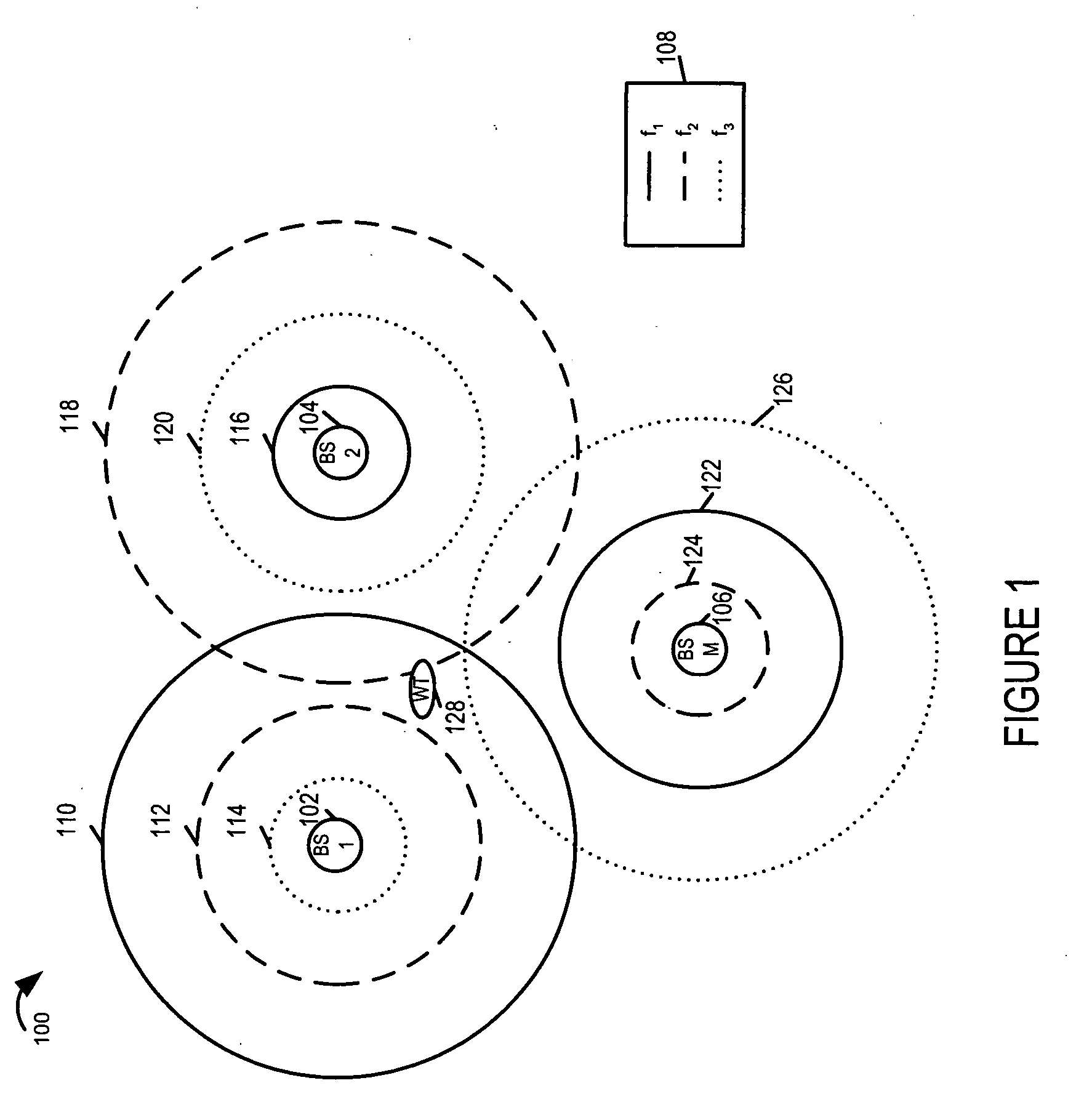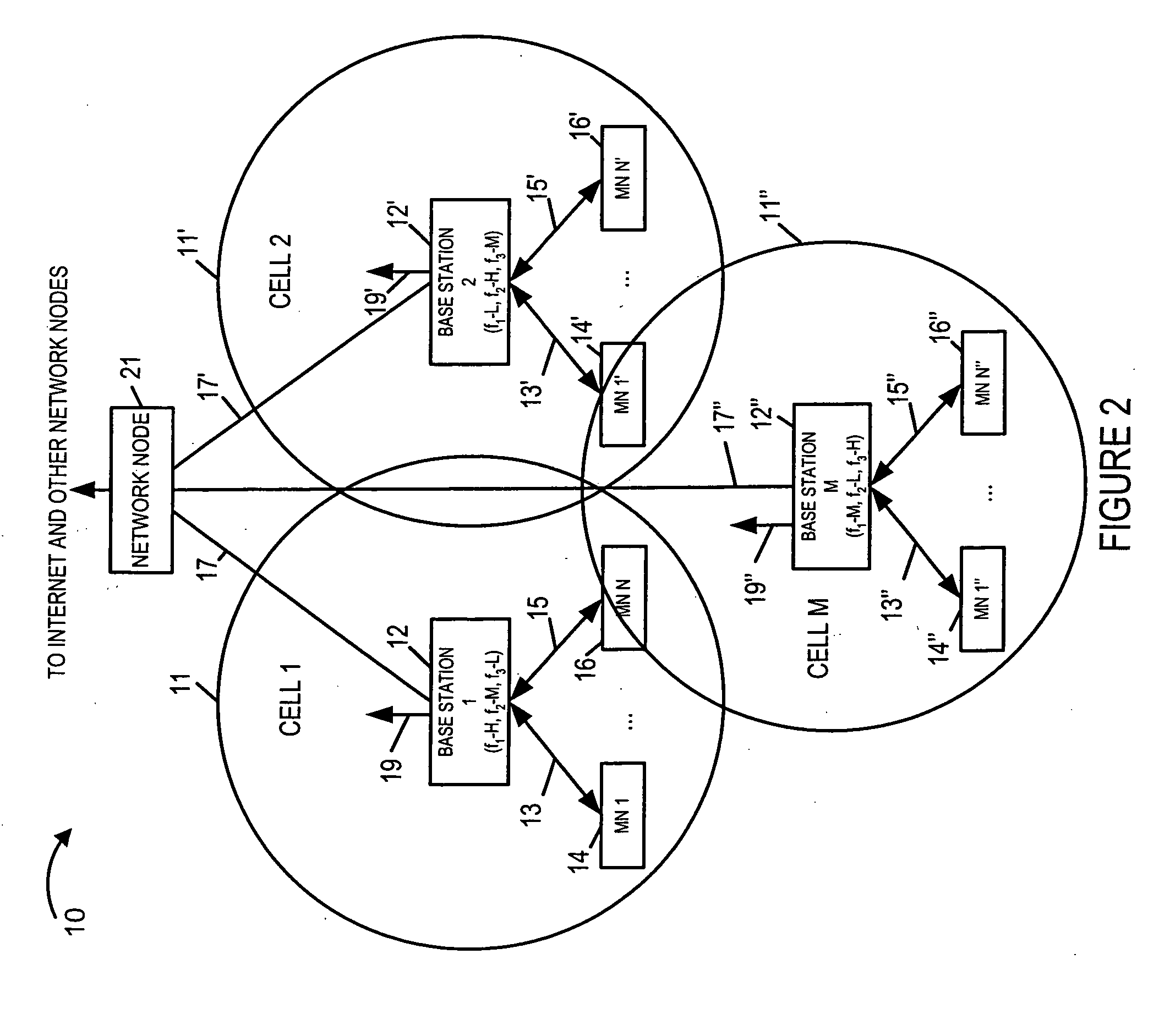Wireless terminal location using apparatus and methods employing carrier diversity
a wireless terminal and antenna technology, applied in the direction of site diversity, transmission monitoring, receiver monitoring, etc., can solve the problems of increasing weight and size, increasing cost, and consuming limited battery power resources during operation
- Summary
- Abstract
- Description
- Claims
- Application Information
AI Technical Summary
Benefits of technology
Problems solved by technology
Method used
Image
Examples
Embodiment Construction
[0022]FIG. 1 is a drawing showing three exemplary base stations, BS 1102, BS 2104, BS M 106 in a wireless communications system 100 using carrier diversity. Each BS 102, 104, 106, transmits using a plurality, e.g., three different carrier frequencies, each at a different power level. The power transmission levels for a given carrier for adjacent base stations are different. The power level strength for a given carrier and base station is indicated by the relative size of the corresponding circle around the base station. As shown in legend 108, the solid line is used to represent the f1 carrier frequency; the dashed line is used to represent the f2 carrier frequency; the dotted line is used to represent the f3 carrier frequency. BS1102 transmits using carrier frequencies (f1, f2, f3) at (high, medium, low) power level represented by circles (110, 112, 114), respectively. BS2104 transmits using carrier frequencies (f1, f2, f3) at (low, high, medium) power level represented by circles ...
PUM
 Login to View More
Login to View More Abstract
Description
Claims
Application Information
 Login to View More
Login to View More - R&D
- Intellectual Property
- Life Sciences
- Materials
- Tech Scout
- Unparalleled Data Quality
- Higher Quality Content
- 60% Fewer Hallucinations
Browse by: Latest US Patents, China's latest patents, Technical Efficacy Thesaurus, Application Domain, Technology Topic, Popular Technical Reports.
© 2025 PatSnap. All rights reserved.Legal|Privacy policy|Modern Slavery Act Transparency Statement|Sitemap|About US| Contact US: help@patsnap.com



